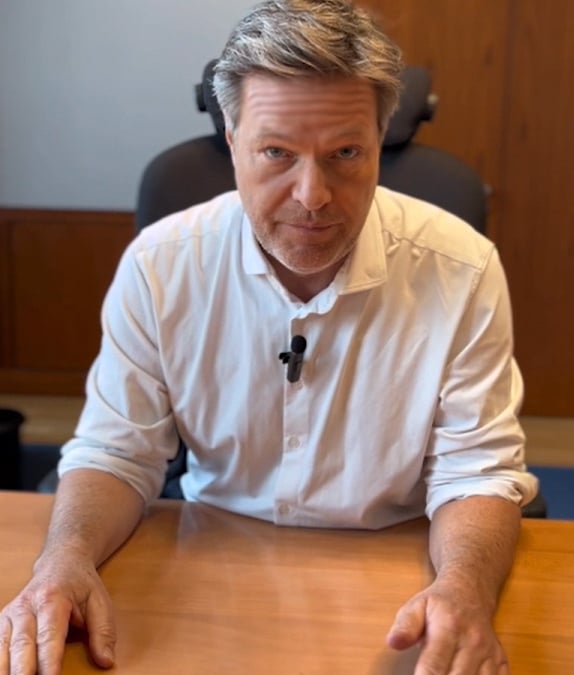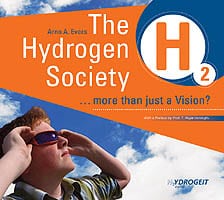
by Hydrogeit | May 2, 2024 | Development, Fuel cells, Germany, News
Project developer Enertrag has appointed Tobias Bischof-Niemz to the board. From the beginning of April 2024, the hitherto head of new energy solutions will be responsible for the newly created executive division of “Projects International & Technology.” The move will see the number of board members rise from three to four.
Jörg Müller, supervisory board chairman, founder and principal shareholder of the company located in Uckermark in eastern Germany, explained: “We are convinced that Dr. Bischof-Niemz, with his extensive experience and expertise, is the ideal candidate for the board position of Projects International & Technology. His commitment to sustainability and his successful track record in the design and implementation of integrated renewable power plants that combine power, hydrogen and heat production make him a key figure for the further development of Enertrag at a global level.”
Advertisements

The appointment by Enertrag, which now employs over 1,000 staff members, is the company’s response to growing international interest. Prior to joining the board, the 47-year-old was in charge of the organization’s international activities and sector coupling solutions.

by Lewitz | Apr 30, 2024 | Development, Europe, Fuel cells, Germany, News
“Today is a good day for industry location Germany, climate protection and sustainable jobs in our country” – German economy and climate protection minister Robert Habeck was referring to the first bidding process for carbon contracts for difference, which the German government launched in mid-March 2024.
Fig.: Robert Habeck explains his policy
Advertisements

Habeck.jpg – Wolf, bitte die Bildqualität so gut wie möglich optimieren
Source: Screenshot BMWK (German economy ministry) video
“With the carbon contracts for difference, firstly, we are promoting modern, climate-friendly industrial systems of tomorrow. Through this will come new technologies, value chains and infrastructures. This helps, secondly, industry worldwide to switch to climate-friendly production. And thirdly, with the carbon contracts for difference, we are setting new international standards for efficient and low-bureaucracy funding,” he added.
Abroad, this step will be admired with envy, according to Habeck: “Cool what you’re doing in Germany. We want that too.”
Even if some people in Germany don’t like to hear that – because they are all too willing to participate in Habeck bashing – you have to give him credit for getting a lot of things off the ground during his time in office. And if representatives of the chemical industry in particular describe these carbon contracts as a “right step,” not everything can have been wrong.
Opinions on Habeck are currently divided: For some, he is not green enough, too pro-business, too industry-friendly – for others, he is too green, too idealistic, too poetic.
But if you look at what has been kicked off in recent months – in particular due to Habeck’s commitment – it can be seen, even with strong climate protection glasses: Germany has come through the last few winters well and now has several LNG terminals built in record time. Germany is gradually getting the energy policy framework that so many people have been calling for, which provides planning security – be it in the heating or transportation sector, but especially in the industrial sector.
Germany is making efforts to keep energy-intensive companies in the steel, glass, cement and chemical industries in particular in the country and to accommodate them. Germany is also forging international partnerships for the import of hydrogen and the transfer of technological expertise (see H2-international May 2024: p. 12 – Norway as partner country of Hannover Messe).
In addition, the IPCEI projects are finally gaining momentum (see p. 28), and even the update to the 37th ordinance on implementation of German emissions reduction law (37. Verordnung zur Durchführung des Bundes-Immissionsschutzgesetzes) was passed by the German parliament on March 14, 2024.
These and many other measures have led, among other things, to a 10.1 percent reduction in climate emissions in 2023 compared to 2022, which corresponds to the largest decrease in CO2 equivalents since 1990.
Yes, this decline is certainly due in part to Germany’s currently reduced economic strength. So? It is quite clear that a transformative process in the energy sector means that production cannot continue at the same level as before. And exactly this is wanted, because we can no longer afford to waste as much energy and as many resources as before.
A moderate decline in economic power is, in my opinion, very manageable for the time being and should be viewed positively, as this is precisely what will break up outdated structures and ensure the country’s future viability. It will now be a matter of keeping the right degree in sight, to find a balance between pressure to act and reasonableness.
This applies not only to the government, but also to the people, who also possess a great deal of responsibility – be it the choice of the next car or the next heating system. Less grumbling and more sustainable action can sometimes work wonders.

by Hydrogeit | Apr 30, 2024 | Europe, Fuel cells, Germany, hydrogen development, News
As of January 2024, the DWV has a slightly shorter name. Instead of being called the German hydrogen and fuel cell association (Deutscher Wasserstoff- und Brennstoffzellen-Verband e.V.) it will – once again – be known as the German hydrogen association (Deutscher Wasserstoff-Verband (DWV) e.V.). The latter is exactly the same name it had when the association was founded in 1996 before it was subsequently changed.
A statement from the association says that the name change is designed to underline “its technological openness and the diversity among its member companies” and its position as “the only national association for hydrogen which covers the whole value chain and expertly represents the interests of all hydrogen technologies (not just explicitly the fuel cell).” The decision to make the amendment was approved by a large majority at its 28th general meeting which took place last November in Berlin.
Advertisements


by Hydrogeit | Apr 30, 2024 | Europe, Germany, international, News
New board, new members and a new structure – that’s the news in the latest press release from the Clean Energy Partnership, otherwise known as CEP. Jörg Starr from GP Joule remains on the board and will be assisted from now on by Elena Hof of Jet H2 Energy and Paul Karzel of Lifte H2. In addition to the two new faces, there has also been a change to its legal structure. Having started out as a private partnership 22 years ago, the German organization has now been transformed into a registered association.
Among what it calls its “ambitious goals” is, for example, the approval of nearly 190 hydrogen refueling stations in Europe. This will involve the training of numerous service providers which are required for HRS approvals. According to CEP, this should allow it to enter the development phase that will pave the way for the further ramp-up of hydrogen mobility and infrastructure in Germany.
Advertisements

Elena Hof underlines CEP’s role: “Our work focuses on road transport, especially the heavy-duty sector, but we are taking account of all modes of transport. After all, politics and industry need strong allies in order to meet the current and future challenges of zero-carbon road transport.”
Paul Karzel explains: “A further expansion of the infrastructure for fuel cell vehicles is of crucial importance for market ramp-up, not only for mobility, but as an efficient, clean and cost-effective forerunner for the entire hydrogen economy.” Jörg Starr adds: “Sustainable restructuring of the energy industry is not possible without hydrogen. The refueling standards initiated by CEP are indispensable.”
The three board members are delighted to welcome Enginius as a new active member of the partnership.

by Sven Jösting | Apr 18, 2024 | Development, Energy storage, Fuel cells, hydrogen development, international, News, Stock market
The Plug share price fell quickly to under 3 USD (2.50 USD at low) and then rose again to over 4 USD. At a price of less than 3 USD, it was possible to build up excellent trading positions (see H2-international Feb. 2024). Is there now a turnaround in the price trend or was this just a brief flare-up before the downward trend continues? Or will there even be an upward trend reversal?
There is a great opportunity for Plug Power to receive a credit (loan) totaling 1.6 billion USD from the US Department of Energy (DOE) as part of the Inflation Reduction Act. This is to come in the third quarter, although there are also rumors that it could be approved much earlier, but I won’t take part in this speculation. In this ideal scenario Plug will then have sufficient capital to establish and expand several production facilities, for example in Tennessee and New York, and start production there. The stock market will value this – if it happens – very positively: with higher share prices.
Advertisements

But a loan is borrowed capital that has to be repaid. What are the conditions? How high is the interest or coupon? What are the repayment arrangements? Will the loan be paid out immediately in full or in installments and with target definitions (milestones)? What is Plug doing with the money? If there is no clarity about this or the loan is not approved in the first place, then the stock market will be miffed or react in disappointment, with the consequence of falling share prices.
Parallel to this is running a share placement program (at-the-market) worth 1 billion USD. Of this, already over 305 million USD, through the placement of 77.4 million shares, have flowed into Plug’s account. This will also correlate positively with the DOE credit: If this is granted, Plug’s share price will – even if possibly only for a short time – climb, and this then enables the perfect placement of shares via ATM in the ramp-up. This money from the ATM program can be used to solve the short-term liquidity problem, since the cash on hand lay at just 135 million USD December 31, 2023.
There are also other possible difficulties, because the US Treasury Department is defining how hydrogen must be produced in order to receive the subsidy of up to 3 USD per kg. Plug is relying very heavily on this funding, but there are still questions: From which location must the regenerative energy come from, in what amount and at what point in time? And at which location must the electrolysis take place? With this are, like in the EU, a series of bureaucratic hurdles – unfortunately.
Disappointing figures
What are these figures: The turnover in fiscal year 2023 amounted to, instead of the expected 1.2 billion USD, only 891 million USD. The loss even amounted to 1.4 billion USD, which corresponds to a minus of 2.30 USD per share. The press conference on the results in March raised more questions than it answered.
For example, the material inventory is to be reduced by a value of 700 million USD via the delivery of finished products to customers. Whereas in 2023 only 400 million USD was invested in this area, no more capital is to flow into here in 2024.
The production at locations such as Georgia, Tennessee and Louisiana is to be ramped up and contribute to an increase in the profit margin. These sites are already capable of producing liquid hydrogen for the company itself and supplying it to customers. The Texas and New York sites will only be continued once the DOE loan has been approved, as otherwise they tie up too much liquidity.
In addition, there is to be price raisings (among others for H2, stacks and electrolyzers) and a cost-cutting program of 75 million USD. Liquid hydrogen is currently still being purchased, which entails losses, but is to be replaced by self-produced hydrogen.
After Plug Power – I reported in detail – established production facilities in the USA and internationally in a variety of ways and thus severely strained liquidity, the planned cost-cutting program amounting to 75 million USD is now to take effect. Whether this amount will be sufficient may be doubted, however, because it seems downright ridiculous in view of the Plug’s liquidity problems and comes much too late. That the company has started to produce liquid hydrogen at several locations and has delivered to customers like Amazon and Walmart is good news for now, but will at first have little influence on the company figures.
With orders for electrolyzers too has Plug scored, but it will be some time before significant sales and thus profits are visible here. That the Saudi sovereign wealth fund Public Investment Fund (PIF) at the end of 2023, with the selling of 5.67 million shares, has completely withdrawn from Plug is not a good sign.
Summary
Words must now be followed by deeds, because all too often very full-bodied forecasts have been made. That Plug will bring partners on board for some projects seems very likely. And also the spin-off (partial sale) of some units is conceivable, if liquidity cannot be adequately presented soon. However, there is currently no need for action. Plug is clearly on my watch list, though, as the company is active in the right markets at the right time. Once the financial problems have been solved, there will possibly also be changes in management, which has lost trust, and Plug will continue on its way.
Over 170 million shares sold short (short interest, status mid-February) are dubious, however, as there is massive speculation against the company or – keywords Amazon and Walmart (warrants) – a form of hedging is being used – no guarantees. All the same, already 10 million shares were short covered in January/February. On the other hand, it is this short interest that can sometimes have a price-driving effect via the covering (short squeeze) when good news is reported. Everything has two sides.
There is still no need for action, however, since the publication of the figures for the first quarter is pending. That various business media in Germany count Plug Power among their top investments in hydrogen befuddles me, though. There are more convincing H2 investments.fa
Disclaimer
Each investor must always be aware of their own risk when investing in shares and should consider a sensible risk diversification. The FC companies and shares mentioned here are small and mid cap, i.e. they are not standard stocks and their volatility is also much higher. This report is not meant to be viewed as purchase recommendations, and the author holds no liability for your actions. All information is based on publicly available sources and, as far as assessment is concerned, represents exclusively the personal opinion of the author, who focuses on medium- and long-term valuation and not on short-term profit. The author may be in possession of the shares presented here.
Author: Sven Jösting







